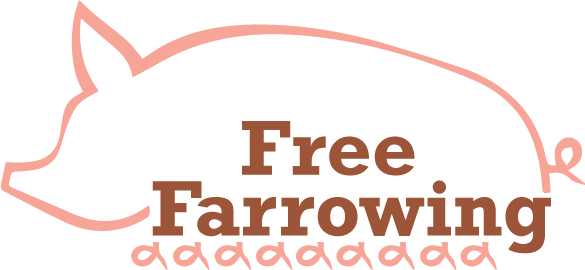
This is based on re-inventing the Ljungstrøm-type systems by using relatively sophisticated designed pens (e.g. PigSAFE) for the first 10 days post-farrowing.
This allows the litters to be managed by stockpeople if necessary (e.g. cross-fostering) and become settled on the sow before moving into cheaper hoop-barn-type structures that might have some additional pen components to promote piglet survival (e.g. sloped walls, creeps).
As depicted in the pictures above. This system is currently being trialled by researchers in the R&D team at Rivalea, Australia and certain aspects are adapted for an Australian climate.


Key features
The below assumes that piglets are farrowed in designed individual pens such as PigSAFE.
The sow is given;
- Freedom of movement at all times
- Opportunity to withdraw into a nest
- Undisturbed nest-site
- Opportunity to nest-build
- Separate dunging and resting areas
- Opportunity to physically contact other sows
The piglets are given;
- Improved udder access
- Sloped walls for protection during sow lying events
- Appropriate creep environment
- Reduced spread of infection between pens for 10d before mixing
- Opportunity to experience an enriched environment
- Opportunity to dung away from resting areas
- Opportunity to mix with litters pre-weaning
The staff are ensured;
- Fast and safe inspection of piglets during farrowing and for the first 10d of lactation
- Easy establishment of standardised litters before mixing (e.g. through cross-fostering)
- Easy maintenance of good hygiene in the pens (separate dunging area)
- Easy provision of nest building materials
- Ability to separate sow from piglets and staff for husbandry procedures in the first 10d of lactation
How to build a Two-Stage Group System
First stage building recommendations are based on what individual farrowing system you want to use for the first 10d. This example uses PigSAFE.
The second stage depends on group size and recommended management protocols.
Recommendations for Group Systems
Successful group systems rely on careful management and careful consideration of group size and group dynamics. There are several recommendations:
- Keep group sizes manageable – 6-10 sows and litters
- Make sure sows are familiar with each other (i.e. housed together during gestation)
- Provide plenty of “resource space” (i.e. make sure enough feeder and drinker space)
- Provide plenty of “social space” (i.e. allow litters to suckle on their own to limit cross-suckling)
- Provide suitable solid flooring for sow-sow interactions
- Recommended space is 10 sq metres per sow and litter
Rivalea are currently using groups of 6 sows and their litters who are mixed at approximately 14 days into lactation. Each sow and litter have 9.5 sq metres of space. There is one ad libitum sow feeder in the pen with feed access for two sows at a time. For cooling purposes there are misters above the dunging area. Download a floorplan of this group system.
View the floorplan of the Rivalea group system.
For more information on this system please contact rivalea@rivalea.com.au


